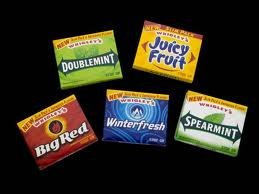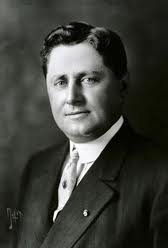The dachshund German: "badger dog", also known as the wiener dog, badger dog, doxie, and sausage dog, is a short-legged, long-bodied, hound-type dog breed. The dog may be smooth-haired, wire-haired, or long-haired. Coloration varies.
The dachshund was bred to scent, chase, and flush out badgers and other burrow-dwelling animals. The miniature dachshund was bred to hunt small animals such as rabbits.
According to the American Kennel Club, the dachshund was ranked 9th in popularity among dog breeds in the United States in 2022.
Etymology
The name dachshund is of German origin, and means "badger dog," from Dachs ("badger") and Hund ("dog, hound"). The German word Dachshund is pronounced [ˈdaks.hʊnt] . The pronunciation varies in English: variations of the first and second syllables include /ˈdɑːks-/, /ˈdæks-/ and /-hʊnt/, /-hʊnd/, /-ənd/. It may be incorrectly pronounced as /ˈdæʃ-/hound by some English speakers. Although Dachshund is a German word, in modern Germany, the dogs are more commonly known by the short name Dackel. Working dogs are less commonly known as Teckel.
Because of their long, narrow build, they are often nicknamed wiener or sausage dog.
Appearance
A typical dachshund is long-bodied and muscular with short stubby legs. Its front paws are disproportionately large, being paddle-shaped and particularly suitable for digging. Its skin is loose enough not to tear while tunneling in tight burrows to chase prey. The dachshund has a deep chest which provides plenty of space for heart development and lung capacity. Its snout is long.
Dachshunds come in three sizes: standard, miniature,
and kaninchen (German for "rabbit"). Although the standard and miniature sizes are recognized almost universally, the rabbit size is not recognized by clubs in the United States and the United Kingdom. The rabbit size is recognized by the Fédération Cynologique Internationale (World Canine Federation) (FCI), which contain kennel clubs from 83 countries all over the world. An increasingly common size for family pets falls between the miniature and the standard size; these are frequently referred to as "tweenies," which is not an official classification.
A full-grown standard dachshund typically weighs 16 lb to 32 lb, while the miniature variety normally weighs less than 12 . The kaninchen weighs 8 lb to 11 lb. According to kennel club standards, the miniature (and kaninchen, where recognized) differs from the full-size only by size and weight, thus offspring from miniature parents must never weigh more than the miniature standard to be considered a miniature as well. While many kennel club size divisions use weight for classification, such as the American Kennel Club, other kennel club standards determine the difference between the miniature and standard by chest circumference; some kennel clubs, such as in Germany, even measure chest circumference in addition to height and weight.
The dachshund is a creation of German breeders and includes elements of German, French, and English hounds and terriers. Dachshunds have been kept by royal courts all over Europe, including that of Queen Victoria, who was particularly enamored of the breed.
The first verifiable references to the dachshund, originally named the "Dachs Kriecher" ("badger crawler") or "Dachs Krieger" ("badger warrior"), came from books written in the early 18th century. Prior to that, there exist references to "badger dogs" and "hole dogs", but these likely refer to purposes rather than to specific breeds. The original German dachshunds were larger than the modern full-size variety, weighing between 31 and 40 lb, and originally came in straight-legged and crook-legged varieties (the modern dachshund is descended from the latter). Though the breed is famous for its use in exterminating badgers and badger-baiting, dachshunds were also commonly used for rabbit and fox hunting, for locating wounded deer, and in packs were known to hunt game as large as wild boar and as fierce as the wolverine.
Popularity
Dachshunds are one of the most popular dogs in the United States, ranking 12th in the 2018 AKC registration statistics. They are popular with urban and apartment dwellers, ranking among the top 10 most popular breeds in 76 of 190 major US cities surveyed by the AKC.
There are organized local dachshund clubs in most major American cities, including New York, New Orleans, Portland, Los Angeles, and Chicago.
- 1 pound lean ground beef
- 1 (16-ounce) can refried beans
- 1 cup salsa
- 2 cups shredded iceberg lettuce
- 2 large tomatoes, chopped
- 1 cup (4 ounces) shredded Cheddar cheese
- 1/2 cup sour cream
- In a large nonstick skillet over medium-high heat, cook beef 6 to 7 minutes or until browned, stirring frequently; drain off excess liquid.
- Stir in refried beans and salsa, breaking up mixture with the back of a spoon. Bring to a boil, reduce heat to low, and simmer 5 minutes, or until well combined and heated through, stirring frequently. Remove skillet from heat, scrape down sides with a spatula, and smooth mixture evenly in skillet.
- Arrange lettuce, tomatoes, cheese, and sour cream in concentric circles (one inside the next) on top of beef mixture, and serve immediately.

1921 – Deborah Kerr, Scottish actress (d. 2007)

- Many other cultures chewed gum made from the resin of the mastic tree, from plants, grasses, and other resins.
- In 1848, John B. Curtis developed and sold the first commercial chewing gum, which was called “The State of Maine Pure Spruce Gum.”
- Around 1850, a gum made from paraffin wax was developed and surpassed the spruce gum in popularity.
- December 28, 1869, William Semple filed an early patent on chewing gum, patent number 98,304.
- Studies show chewing gum helps improve memory, reduce stress, and increase alertness.
- Chewing sugar-free gum improves overall oral hygiene while also helping to curb cravings and improving digestion.




































